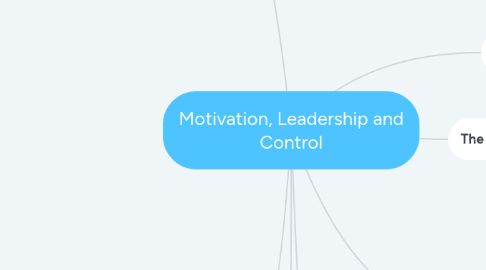
1. Psycological Contract
1.1. Human Relations - Interaction of employees with the company and each other
2. Strategies for Enhancing Job Satisfaction and Morale
2.1. 1. Reinforcement / behavior modification 2. Management by objectives 3. Participative management and empowerment 4. Job enrichment and job redesign 5. Modified work schedules
3. Motivation In The Workplace
3.1. Motivation - Force Affecting People Behavior
3.2. The models of employee motivation theories:
3.2.1. Classical Theory
3.2.1.1. • Frederick Taylor (1911) • More money = Greater motivation • Time And Motion Study
3.2.2. Behavior Theory
3.2.2.1. • Hawthorne studies ( 1925) • Physical environment changes affect worker's output • Special attention from management = Increase productivity
3.2.3. Contemporary Motivational Theories
3.2.3.1. 1. Human Resources Model: Theories X and Y
3.2.3.2. 2. Maslow's Hierarchy of Needs Model
3.2.3.3. 3. Two-factor Theory
3.2.3.4. 4. Expectancy Theory
4. The Importance Of Satisfaction & Morale In Workplace
4.1. Job Satisfaction
4.1.1. Degree of enjoyment that people derive from performing their jobs
4.2. Morale
4.2.1. Overall attitude that employees have towards their workplace
4.3. Turnover
4.3.1. Annual % of an organization's workforce that leaves and must be replaced
5. High Priorities For Today's Workforce
5.1. • Family Orientation
5.2. • Sense of Community
5.3. • Quality of Life Issue
5.4. • Volunteerism
5.5. • Autonomy
5.6. • Flexibility & Nonconformity
6. Managerial Styles
6.1. 1. Autocratic Style
6.2. 2. Democratic Style
6.3. 3. Free-Rein Style
7. Controlling
7.1. Important of Controlling
7.1.1. 1. It facilitates co-ordination
7.1.2. 2. It helps in planning
7.1.3. 3. Protecting the workplace
7.2. Definition of Controlling
7.2.1. • According to Schermerhorn, "Controlling is the process of measuring performance and taking action to ensure desired result"
7.2.2. • According to Brech, " Controlling is a systematic exercise, which is called as a process of checking actual performance against the standards or plans. This process is to ensure adequate progress and also recording such progress for possible future needs".
7.3. Controlling process
7.3.1. 1. Establish performance objectives and standards
7.3.1.1. • Measurable or tangible
7.3.1.2. • Non-measurable or intangible
7.3.2. 2. Measure actual performance
7.3.2.1. • Source of information (How) - Personal observation - Statistical reports - Oral reports - Written reports
7.3.2.2. • Control criteria (What) - Employees - Satisfaction - Turnover - Absenteeism - Financial - Costs - Output - Sales
7.3.3. 3. Compare actual performance with objectives and standards
7.3.4. 4. Take necessary action
